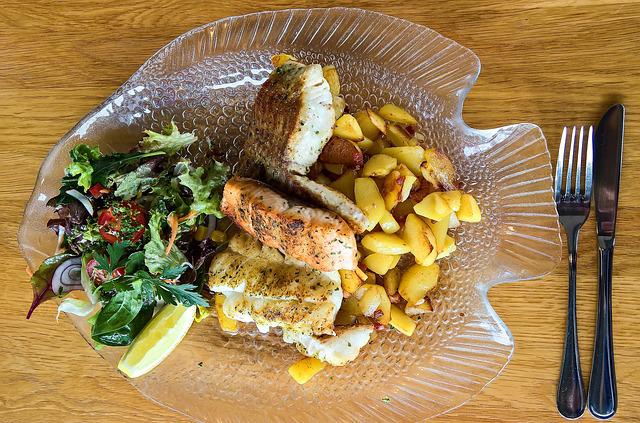The Flexitarian Diet is a dietary method that emphasizes plant-based meals while permitting meat and other animal products in moderation.
It is more adaptable than a completely vegetarian or vegan diet.
Going flexitarian may be for you if you want to add more plant foods to your diet but don’t want to fully eliminate meat.
This article discusses the Flexitarian Diet, its benefits, items to eat, and a one-week meal plan.
What exactly is the Flexitarian Diet?
Dawn Jackson Blatner, a nutritionist, developed the Flexitarian Diet to assist people with the benefits of vegetarian eating while still enjoying animal products.
Combining the words “flexible” and “vegetarian” is where the name of this diet came from.
Vegetarians eschew meat and other animal foods, but vegans avoid meat, fish, eggs, dairy, and all other animal-derived foods.



Flexitarians consume animal products, so they are not vegetarians or vegans.
The Flexitarian Diet has no guidelines or suggested calorie and macronutrient amounts. In fact, it is more of a way of life than a diet.
It is founded on the following tenets:
- Consume a lot of fruits, veggies, legumes, and whole grains.
- Instead of animal protein, prioritize plant protein.
- Be adaptable and include meat and animal products on occasion.
- Consume foods that are as natural.
- Reduce your intake of added sugars and sweets.
The Flexitarian Diet is a good choice for people trying to eat healthily because of its adaptability and emphasis on what to include rather than what to exclude.
The overall goal is to consume more nutritious plant foods and less meat.
Potential health advantages
Eating flexitarian may provide a number of health benefits.
Because there is no precise definition of this diet, determining if and how the researched advantages of other plant-based diets apply to the Flexitarian Diet is difficult.
Nonetheless, research on vegan and vegetarian diets continues to be useful in demonstrating how semi-vegetarian diets may benefit health.
It is necessary to eat fruits, vegetables, legumes, whole grains, and other minimally processed foods to get the full benefit from a plant-based diet.
Reduced meat consumption combined with continued consumption of processed meals high in added sugar and salt will not result in the same benefits.
Cardiovascular disease
Diets that are high in fiber and healthy fats are beneficial to heart health.
A study of 48,188 people found that vegetarians and fish eaters had lower rates of ischemic heart disease than meat eaters; however, vegetarians had a greater incidence of hemorrhagic and total stroke.
Fish and vegetarians had 13% and 22% lower incidences of ischemic heart disease, respectively than meat eaters.

This is due to vegetarian diets generally being high in fiber and antioxidants, which may lower blood pressure and raise good cholesterol.
An analysis of 15 studies published in 2020 discovered that a vegetarian diet significantly reduced systolic and diastolic blood pressure when compared to an omnivore’s diet.
Furthermore, a 2020 study of 10,797 people on vegetarian, pescatarian, and flexitarian diets discovered that those who consume less animal protein have lower body mass index, total cholesterol, and blood pressure than those who ate meat.
Flexitarian eating, on the other hand, is intended to be mostly plant-based and will most likely provide benefits similar to totally vegetarian diets.
Weight control
Flexitarian eating may also aid with weight management.
This is due in part to the fact that flexitarians frequently limit high-calorie, highly processed foods in favor of eating more plant foods that are naturally lower in calories.
Several studies have found that those who eat a plant-based diet lose more weight than those who do not.
A study of over 1,100 adults indicated that those who followed a vegetarian diet for 18 weeks dropped 4.5 pounds (2 kg) more than those who did not.
According to this and other studies, vegans tend to lose more weight than vegetarians and omnivores.
Because the Flexitarian Diet is more similar to a vegetarian diet than a vegan diet may aid in weight loss, but not as much as a vegan diet.
However, weight loss is not the Flexitarian Diet’s primary purpose. It focuses on increasing the amount of nutrient-dense foods in your diets, such as fruits, legumes, and vegetables.
Diabetes
Diabetes type 2 is a worldwide health crisis. A healthy diet, particularly one that is largely plant-based, may aid in the prevention and management of this condition.
The reason behind this is that plant-based diets promote weight loss and meals that are high in fiber, low in bad fats, and added sugar.

A study with over 200,000 participants discovered that a diet high in plant foods and low in animal foods was related to a 20% lower incidence of diabetes.
Furthermore, a plant-based diet high in healthy plant foods was related to a 34% decrease in diabetes risk, but a plant-based diet high in less healthy plant foods was associated with a 16% rise in diabetes risk. A healthy food diet includes whole grains, fruits, vegetables, nuts, legumes, and vegetables, whereas fruit juices, sweetened beverages, refined grains, and sweets are considered not so healthy.
According to additional research, patients with type 2 diabetes who ate plant-based diets had a lower average blood sugar reading than those who ate conventional diets.
Cancer
Dietary patterns that are high in nutritious plant foods, including fruits, vegetables, and legumes, and consuming low in processed foods have been linked to a lower risk of some malignancies.
According to research, vegetarian diets are connected with a lower overall incidence of all cancers, particularly colorectal cancers.
A 7-year study of colorectal cancer cases in 78,000 persons discovered that semi-vegetarians were 8% less prone to have this type of cancer than non-vegetarians.
As a result, including more vegetarian foods into your diet by eating flexitarian may lower your cancer risk.
It could be beneficial to the environment
The Flexitarian Diet could be beneficial to both your health and the environment.
Reduced meat consumption can aid in the preservation of natural resources by lowering greenhouse gas emissions and land and water use.
According to an assessment of the studies on the sustainability of plant-based diets, transitioning from the typical Western diet to flexitarian eating, in which meat is largely substituted by plant foods, might reduce greenhouse gas emissions by 7%.

Eating more plant foods will also increase the demand for more land to be dedicated to growing fruits and vegetables for humans rather than cattle feed.
Plant cultivation uses significantly fewer resources than raising animals for food.
In fact, greenhouse gas emissions from vegan and ovo-lacto-vegetarian diets are around 50% and 35% lower, respectively, than those from most present omnivore diets, with equivalent reductions in natural resource consumption.
The disadvantages of consuming less meat and animal products
Flexitarian and other plant-based diets can be quite nutritious when properly planned.
Negative sides to eating less meat and animal products
However, depending on the nutritional composition of their other food choices, some people may be in danger of nutrient shortages if they reduce their consumption of meat and other animal products.
On the Flexitarian Diet, you should be mindful of the following dietary deficiencies:
- zinc iron vitamin B12
- calcium
- fatty acids omega-3
According to a review of the studies on vitamin B12 insufficiency, vegetarians may be in danger, with 62% of prenatal vegetarians and up to 90% of older adult vegetarians deficient.
Only animal products contain naturally occurring vitamin B12. Nonetheless, B12-fortified foods can be a component of a balanced diet. You can also consult with a healthcare practitioner or trained dietitian to determine whether a B12 supplement is required.
Because these elements are best absorbed from animal diets, flexitarians may have lower zinc and iron reserves. While it is feasible to receive enough of these nutrients from plant foods alone, flexitarians must carefully organize their diets to do so.
Iron and zinc are found in nuts, seeds, whole grains, and legumes. Including a source of vitamin C is an excellent approach to boosting iron absorption from plant-based diets.
Some flexitarians may avoid dairy and must rely on plant-based calcium sources to meet their needs. Calcium-rich plant foods include bok choy, kale, chard, and sesame seeds.
Finally, flexitarians, vegetarians, and vegans should be aware of the importance of omega-3 fatty acids, which are typically present in fatty fish. Individuals who follow these diets should consider supplementing with algal oil or fish oil to guarantee appropriate EPA/DHA levels.
Remember that eating flexitarian allows you to consume varying amounts of meat and animal products. Nutritional deficiencies may not be a problem if the diet is well planned and includes a range of whole foods.
Foods to Consume on a Flexitarian Diet
Plant proteins and another whole, less processed plant foods are prioritized by flexitarians, while animal products are limited.
Regularly consumed foods include:
- Protein sources include soybeans, tofu, tempeh, legumes, and lentils.
- For greens, try bell peppers, Brussels sprouts, green beans, carrots, and cauliflower types of vegetables.
- Winter squash, peas, corn, and sweet potato are examples of starchy vegetables.
- Fruits include apples, oranges, berries, grapes, and cherries.
- Quinoa, teff, buckwheat, and farro are examples of whole grains.
- For healthy fats, try to eat Almonds, flaxseed, chia seeds, walnuts, cashews, pistachios, peanut butter, avocados, olives, and coconut.
- Plant-based milk substitutes include unsweetened almonds, coconut, hemp, and soy milk.
- For condiments, basil, oregano, mint, thyme, cumin, turmeric, ginger, and other herbs, spices, reduced-sodium soy sauce, apple cider vinegar, salsa, mustard, nutritional yeast, and sugar-free ketchup are excellent choices.
- Beverages include still and sparkling water, tea, and coffee.
When incorporating animal products, whenever possible, choose the following:
- Free-range or pasture-raised eggs
- Organic, free-range, or pasture-raised poultry
- Wild-caught fish
- Grass-fed or pasture-raised meat
- Organic dairy from grass-fed or pastured animals
Here is a suggestion for a week’s worth of flexitarian meals
This 1-week meal plan will give you some ideas on what a flexitarian menu looks like.

Monday
- breakfast: oatmeal with apples, milled flaxseed, and cinnamon
- lunch: toss some shrimp, corn, black beans, and avocado in a salad
- Dinner: a slice of whole grain bread, a cup of lentil soup with salad
Tuesday
- breakfast: whole grain toast with avocado and poached eggs
- lunch: a burrito made with brown rice, beans, and vegetables
- Dinner: try zucchini noodles with tomato sauce and white beans
Wednesday
- breakfast: some coconut yogurt with bananas and walnuts
- lunch: Whole grain wrap with hummus, veggies, and chickpeas
- Dinner: consists of grilled salmon, baked sweet potatoes, and green beans
Thursday
- breakfast: unsweetened almond milk, spinach, peanut butter, and frozen berries blended into a smoothie.
- lunch: Salad Caesar, lentils, and tomato soup
- dinner: Baked chicken, quinoa, and roasted cauliflower
Friday
- breakfast: Greek yogurt along with blueberries and pumpkin seeds
- Lunch: chard wraps with mixed vegetables and a peanut dipping sauce
- Dinner: lentil stew with a side salad.
Saturday
- breakfast: over-easy eggs with sautéed vegetables and fruit salad
- Lunch: make yourself a peanut butter sandwich on whole grain bread with crushed berries
- dinner: bean burgers with avocado and sweet potato fries
Sunday
- breakfast: scramble with mixed vegetables
- lunch: salad with dried cranberries, pecans, and feta cheese
- Dinner: stuffed bell peppers with ground turkey along with some fruits
Flexitarian eating is minimizing your consumption of meat and other animal products while emphasizing healthful plant-based foods. Some folks may want to consume more or fewer animal products than indicated in the above meal plan.
In conclusion
The semi-vegetarian Flexitarian Diet emphasizes nutritious plant proteins and another whole, minimally processed plant-based meals while encouraging moderate consumption of meat and animal products.
Eating flexitarian may help you lose weight and lower your risk of heart disease, cancer, and type 2 diabetes. It could even be beneficial to the environment.
However, careful planning of your flexitarian meal selections is necessary to avoid nutritional deficits and get the greatest health benefits.
